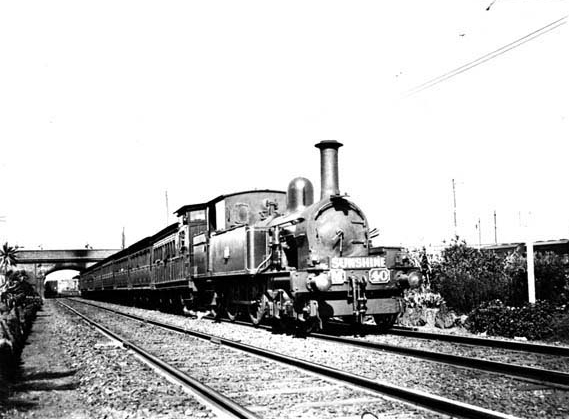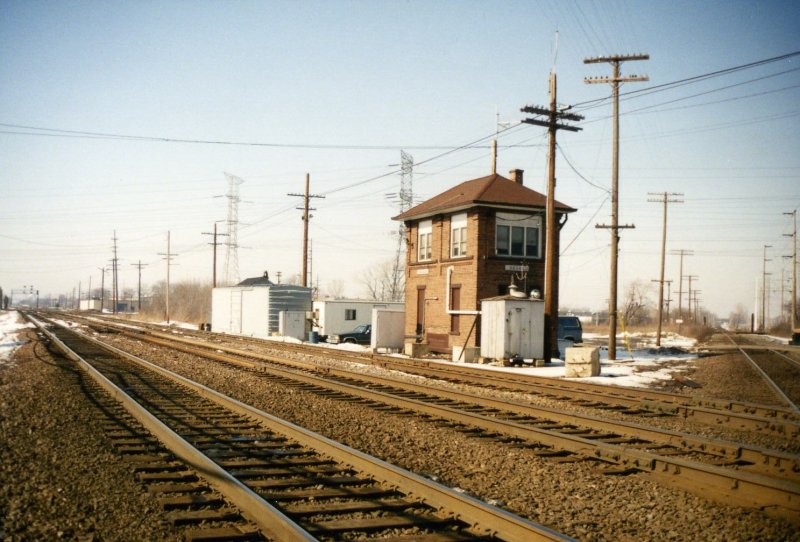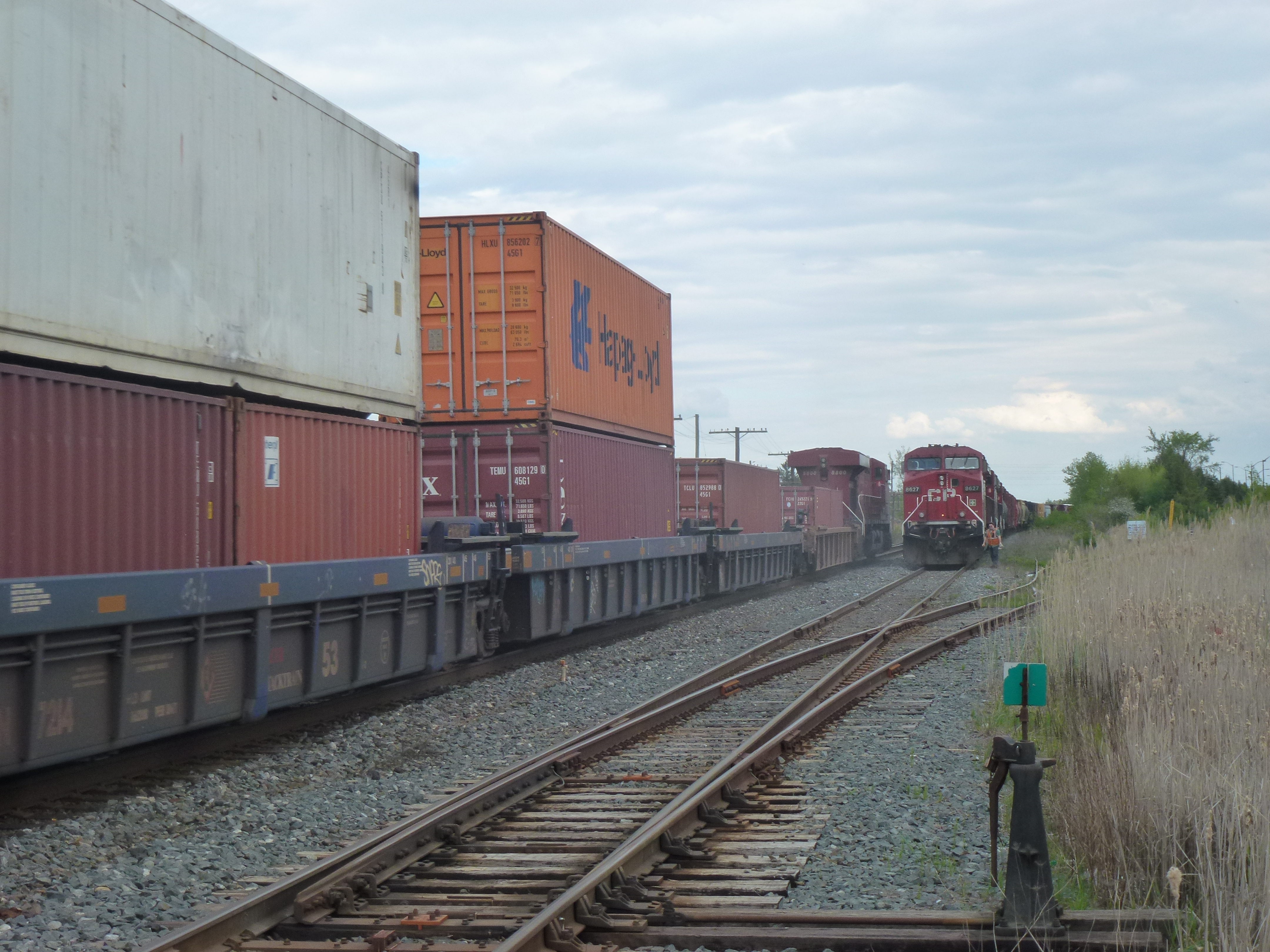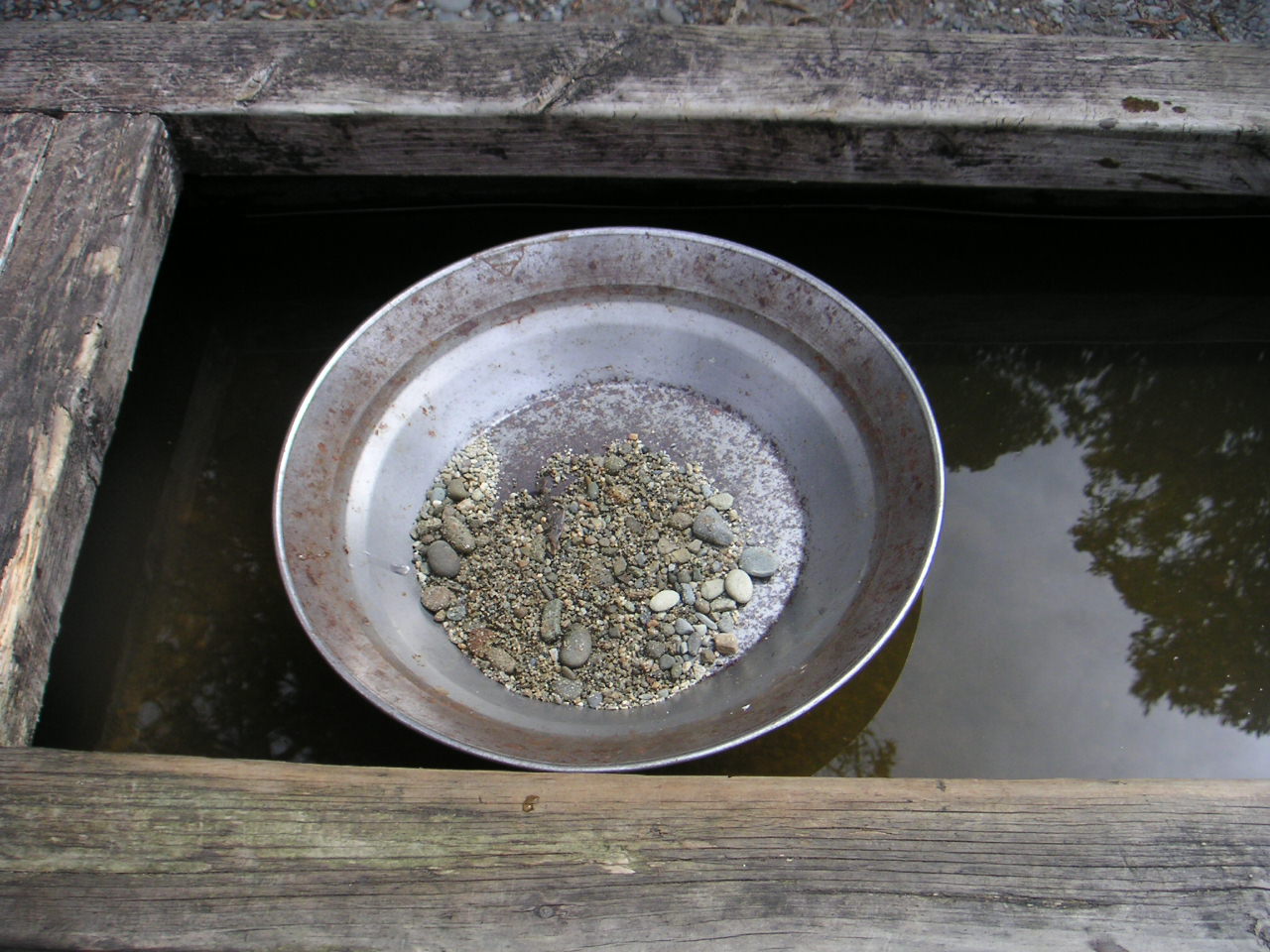|
Diggers Rest Railway Station, Melbourne
Diggers Rest railway station is a commuter railway station on the Sunbury line, which is part of the Melbourne railway network. It serves the north-western suburb of Diggers Rest, in Melbourne, Victoria, Australia. Diggers Rest station is a ground level unstaffed station, featuring two side platforms. It opened on 2 October 1859, with the current station provided in 2012. History Diggers Rest opened on 2 October 1859, eight months after the railway line from Sunshine was extended to Sunbury. Like the suburb itself, the station was named after the fact that the area was used as a resting place for prospectors travelling to Bendigo during the Victorian gold rush. At the time of opening, a small goods shed and siding were provided. In 1928, interlocked gates were provided at the Calder Highway level crossing, located at the down end of the station, and were replaced with boom barriers in 1982. In 1989, the goods siding was abolished and, in 1992, the remaining crossover was ... [...More Info...] [...Related Items...] OR: [Wikipedia] [Google] [Baidu] |
Public Transport Victoria
Public Transport Victoria (PTV) is the brand name for public transport in the Australian state of Victoria. It was previously the trading name of the Public Transport Development Authority (PTDA), a now-defunct statutory authority in Victoria, responsible for providing, coordinating, and promoting public transport. PTV began operating on 2 April 2012, taking over many of the responsibilities previously exercised by the Director of Public Transport and the Department of Transport. It also took over the marketing of public transport in Victoria from Metlink and Viclink, as well as responsibility for the myki ticketing system, formerly handled by the Transport Ticketing Authority. PTV's functions were transferred to the Department of Transport and Planning (DTP) on 1 July 2019. However, PTV continues to exist as the brand for public transport services in Victoria and refers to the Public Transport division of DTP. Governance PTV was the trading name of the Public Tr ... [...More Info...] [...Related Items...] OR: [Wikipedia] [Google] [Baidu] |
Railways In Melbourne
The Melbourne rail network is a metropolitan Commuter rail, suburban and Rail freight transport, freight rail system serving the city of Melbourne, Victoria (Australia), Victoria, Australia. The metropolitan rail network is centred around the Melbourne central business district (CBD) and consists of 221 railway stations across 16 lines, which served a patronage of 182.5 million over the year 2023–2024. It is the core of the larger Rail transport in Victoria, Victorian railway network, with regional links to both intrastate and interstate rail systems. Metro Trains Melbourne operates the Melbourne metropolitan rail network under franchising, franchise from the Victoria State Government, Victorian Government, overseen by Public Transport Victoria, a division of the Department of Transport and Planning. The government-owned entity V/Line operates trains from Melbourne across Rail transport in Victoria, regional Victoria. The first steam train in Australia commenced service in ... [...More Info...] [...Related Items...] OR: [Wikipedia] [Google] [Baidu] |
Boom Barrier
A bar, post, pole, beam, or boom gate, also known as a boom or a boom barrier, is a beam or bar on a pivot used as a gate. The boom is lowered to block vehicular or pedestrian access through a controlled point or raised to permit such traffic. Typically, the bar has a 90° range of motion with a vertical raised resting position and a horizontal lowered resting position. Bar gates, especially manually operated ones, are often counterweighted to allow easier manual control. Bar gates are frequently paired end to end or closely offset to block traffic in both directions. Some bar gates also have a second arm which hangs 30 to 40 cm below the upper arm when lowered to increase approach visibility. This underbar typically hangs on links, so it lies flat with the main bar as the barrier is raised. Some barriers also feature a pivot roughly half way, where as the barrier is raised, the outermost half remains horizontal, with the barrier resembling an upside-down L (or gamma) when r ... [...More Info...] [...Related Items...] OR: [Wikipedia] [Google] [Baidu] |
Rail Directions
Rail directions are used to describe train directions on rail systems. The terms used may be derived from such sources as compass directions, altitude directions, or other directions. These directions are often specific to system, country, or region. Radial directions Many rail systems use the concept of a centre (usually a major city) to define rail directions. Up and down In British practice, railway directions are usually described as "up" and "down", with "up" being towards a major location. This convention is applied not only to the trains and the tracks, but also to items of lineside equipment and to areas near a track. Since British trains run on the left, the "up" side of a line is usually on the left when proceeding in the "up" direction. On most of the network, "up" is the direction towards London. In most of Scotland, with the exception of the West and East Coast Main Lines, and the Borders Railway, "up" is towards Edinburgh. The Valley Lines network around Cardif ... [...More Info...] [...Related Items...] OR: [Wikipedia] [Google] [Baidu] |
Level Crossing
A level crossing is an intersection where a railway line crosses a road, Trail, path, or (in rare situations) airport runway, at the same level, as opposed to the railway line or the road etc. crossing over or under using an Overpass#Railway, overpass or tunnel. The term also applies when a light rail line with separate Right-of-way (railroad), right-of-way or reserved track crosses a road in the same fashion. Other names include railway level crossing, railway crossing (chiefly international), grade crossing or railroad crossing (chiefly American), road through railroad, criss-cross, train crossing, and RXR (abbreviated). There are more than 100,000 level crossings in Europe and more than 200,000 in North America. Road-grade crossings are considered incompatible with high-speed rail and are virtually non-existent in European high-speed train operations. File:The 5.20 for West Kirby leaving Hoylake - geograph.org.uk - 1503619.jpg, A level crossing at Hoylake, Merseyside, Engl ... [...More Info...] [...Related Items...] OR: [Wikipedia] [Google] [Baidu] |
Interlocking
In railway signalling, an interlocking is an arrangement of signal apparatus that prevents conflicting movements through an arrangement of tracks such as junctions or crossings. In North America, a set of signalling appliances and tracks interlocked together are sometimes collectively referred to as an ''interlocking plant'' or just as an ''interlocking''. An interlocking system is designed so that it is impossible to display a signal to proceed unless the route to be used is proven safe. Interlocking is a safety measure designed to prevent signals and points/switches from being changed in an improper sequence. For example, interlocking would prevent a signal from being changed to indicate a diverging route, unless the corresponding points/switches had been changed first. In North America, the official railroad definition of interlocking is: "''An arrangement of signals and signal appliances so interconnected that their movements must succeed each other in proper sequence''". ... [...More Info...] [...Related Items...] OR: [Wikipedia] [Google] [Baidu] |
Siding (rail)
In rail terminology, a siding is a low-speed track section distinct from a running line or through route such as a main line, branch line, or spur. It may connect to through track or to other sidings at either end. Sidings often have lighter rails, meant for lower speed or less heavy traffic, and few, if any, signals. Sidings connected at both ends to a running line are commonly known as loops; those not so connected may be referred to as single-ended or dead-end sidings, or (if short) stubs. Functions Sidings may be used for marshalling (classifying), stabling, storing, loading, and unloading rail vehicles. Common sidings store stationary rolling stock, especially for loading and unloading. Industrial sidings (also known as spurs) go to factories, mines, quarries, wharves, warehouses, some of them are essentially links to industrial railways. Such sidings can sometimes be found at stations for public use; in American usage these are referred to as team tracks (after ... [...More Info...] [...Related Items...] OR: [Wikipedia] [Google] [Baidu] |
Goods Shed
A goods shed is a railway building designed for storing goods before, after, and during loading to and unloading from a train. A typical goods shed will have a track running through it to allow goods wagons to be unloaded under cover, although sometimes they were built alongside a track with possibly just a canopy over the door. There will also be a door to move goods to or from road wagons and vans, this sometimes is parallel to the rail track, or sometimes on the side opposite the rail track. Inside the shed will generally be a platform and sometimes a small crane to allow easier loading and unloading of wagons. Double track Some goods sheds had more than one track. If one were not adjacent to the unloading platform then the method of working the second siding would be to first empty the wagons adjacent to the platform, and then open the doors on their far side to access those on the second track. Planks or portable bridges were normally provided for this purpose. Conve ... [...More Info...] [...Related Items...] OR: [Wikipedia] [Google] [Baidu] |
Herald Sun
The ''Herald Sun'' is a Conservatism, conservative daily tabloid newspaper based in Melbourne, Australia, published by The Herald and Weekly Times, a subsidiary of News Corp Australia, itself a subsidiary of the American Rupert Murdoch, Murdoch owned News Corp. The ''Herald Sun'' primarily serves Melbourne and the state of Victoria (Australia), Victoria and shares many articles with other News Corporation daily newspapers, especially those from Australia. It is also available for purchase in Tasmania, the Australian Capital Territory and border regions of South Australia and southern New South Wales such as the Riverina and the South Coast (New South Wales), South Coast, and is available digitally through its website and apps. In 2017, the paper had a daily circulation of 350,000 from Monday to Friday. The ''Herald Sun'' newspaper is the product of a Mergers and acquisitions, merger in 1990 of two newspapers owned by The Herald and Weekly Times Limited: the morning tabloid ( ... [...More Info...] [...Related Items...] OR: [Wikipedia] [Google] [Baidu] |
Victorian Gold Rush
The Victorian gold rush was a period in the history of Victoria, Australia, approximately between 1851 and the late 1860s. It led to a period of extreme prosperity for the Australian colony and an influx of population growth and financial capital for Melbourne, which was dubbed " Marvellous Melbourne" as a result of the procurement of wealth. Overview The Victorian Gold Discovery Committee wrote in 1854: With the exception of the more extensive fields of California, for a number of years the gold output from Victoria was greater than in any other country in the world. Victoria's greatest yield for one year was in 1856, when 3,053,744 troy ounces (94,982 kg) of gold were extracted from the diggings. From 1851 to 1896 the Victorian Mines Department reported that a total of 61,034,682 oz (1,898,391 kg) of gold was mined in Victoria. Gold was first discovered in Australia on 15 February 1823, by assistant surveyor James McBrien, at Fish River, between Ry ... [...More Info...] [...Related Items...] OR: [Wikipedia] [Google] [Baidu] |
Bendigo
Bendigo ( ) is an Australian city in north-central Victoria. The city is located in the Bendigo Valley near the geographical centre of the state and approximately north-west of Melbourne, the state capital. As of 2022, Bendigo has a population of 103,818 making it Australia's 19th-largest city by population. Bendigo is the fourth-largest inland city in Australia and the fourth-most populous city in Victoria. Bendigo is administered by the City of Greater Bendigo, formerly the City of Bendigo. The council area encompasses roughly 3,000 square kilometres. The city is surrounded by smaller towns such as Castlemaine, Heathcote, Kyneton, Maryborough, Elmore, Rochester, Goornong and Axedale. The traditional owners of the area are the Dja Dja Wurrung (Djaara) people. The discovery of gold on Bendigo Creek in 1851 transformed the area from a sheep station into one of colonial Australia's largest boomtowns. News of the finds intensified the Victorian gold rush, brin ... [...More Info...] [...Related Items...] OR: [Wikipedia] [Google] [Baidu] |
Gold Prospecting
Gold prospecting is the act of searching for new gold deposits. Methods used vary with the type of deposit sought and the resources of the prospector. Although traditionally a commercial activity, in some developed countries Placer mining, placer gold prospecting has also become a popular outdoor recreation. Gold prospecting has been popular since antiquity. From the earliest textual and archaeological references, gold prospecting was a common thread for gaining wealth. Prospecting for placer gold Prospecting for placer gold is normally done with a Gold panning, gold pan or similar instrument to wash free gold particles from loose surface sediment. The use of gold pans is centuries old, but is still common among prospectors and miners with little financial backing. Deeper placer deposits may be sampled by trenching or drilling. Geophysical methods such as seismic exploration, seismic, gravity or magnetics may be used to locate buried river channels that are likely locatio ... [...More Info...] [...Related Items...] OR: [Wikipedia] [Google] [Baidu] |









